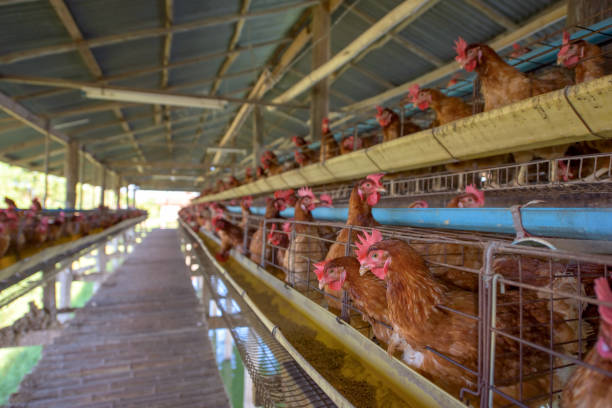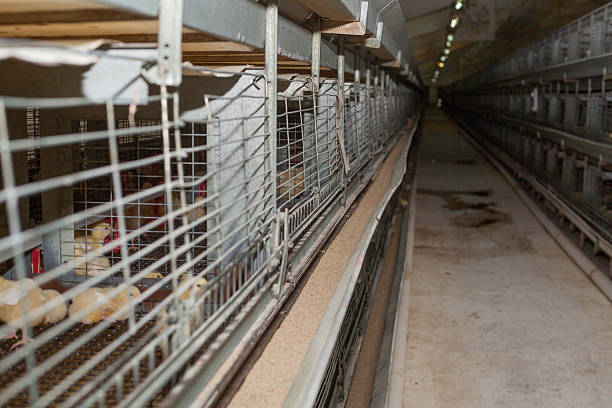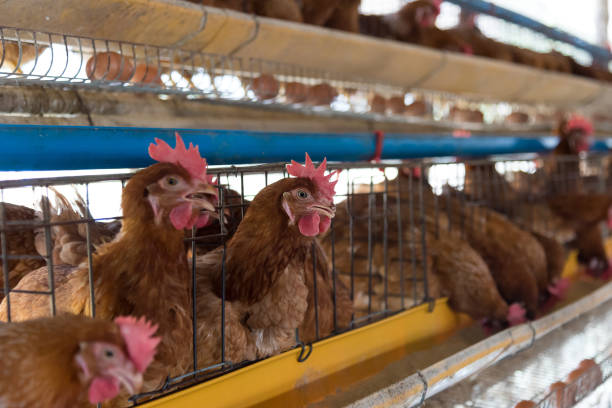Modern Poultry Chicken House Design for Large Scale Egg Production in Nigeria
Modern Poultry Chicken House Design for Large Scale Egg Production in Nigeria
When you’re in the business of egg farming in Nigeria, one of the most important decisions you’ll make is how to design and construct your poultry houses. In recent years, the poultry industry has evolved, and modern chicken house design has become essential for efficient, high-yield egg production. For large-scale operations, especially in Nigeria’s climate and economic landscape, a carefully planned and well-executed chicken house layout can be the difference between a struggling farm and a profitable enterprise.
Why Modern Chicken House Design Matters
The success of a large-scale egg production farm begins with the housing system. Traditional setups with open sheds and minimal climate control simply can’t keep up with the productivity and biosecurity demands of the modern poultry market. Modern chicken house design is all about optimizing growth conditions, minimizing operating costs, ensuring animal welfare, and maximizing egg output.
In Nigeria, where the climate varies from humid tropical along the coast to dry savanna in the north, poultry housing must be adaptable and resilient. Designing a chicken house that responds to these environmental challenges is critical. It’s especially important for egg-laying operations, where hens are sensitive to temperature fluctuations, poor ventilation, overcrowding, and unclean environments.
Key Features of a Modern Poultry House
Ventilation and Temperature Control
One of the most important features of a modern poultry chicken house is an efficient ventilation system. Good ventilation isn’t just about keeping air moving—it’s about maintaining the right temperature, humidity levels, and air quality without overcooling or overheating the birds.
In Nigeria’s hot climate, cooling systems like foggers or evaporative cooling pads are often integrated into the design. These systems reduce the ambient temperature inside the chicken house, creating a more comfortable environment for the hens and reducing stress and mortality. Side wall inlets and tunnel ventilation systems help maintain uniform airflow, especially during peak heat seasons.
Insulation also plays a role, especially in areas with significant day-night temperature variation. Walls and roofs made of insulated materials like sandwich panels or clay blocks can help regulate internal temperatures without relying too much on mechanical cooling or heating.
Light Management
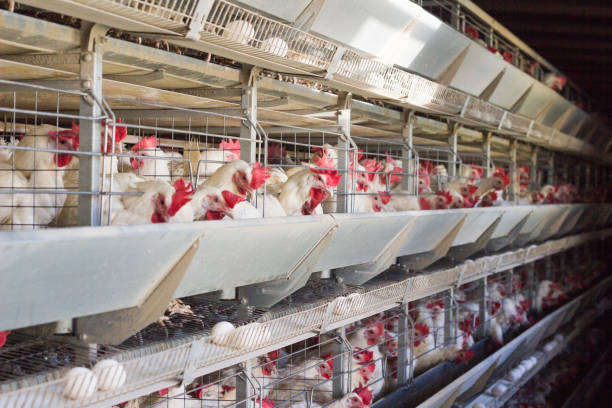
Lighting has a direct impact on laying hens’ reproductive cycles. Modern chicken houses incorporate automated lighting systems that mimic natural daylight patterns. This helps maintain consistent laying cycles and ensures high egg production rates throughout the year.
For Nigerian egg farms, using energy-efficient LED lights not only reduces electricity bills but also lasts longer and produces less heat than traditional bulbs. Timers and dimmer systems can be used to adjust light intensity and duration according to the age and production stage of the hens.
Automated Feeding and Watering Systems
Automation is a key component of modern poultry house design. Manual feeding and watering are time-consuming, labor-intensive, and prone to waste. In large-scale operations, automated feeding systems—including chain feeders, auger systems, and pan feeders—help ensure that every hen receives the proper nutrition at the right time.
Similarly, automated nipple watering systems are now standard in modern poultry houses. These systems prevent water wastage, maintain cleanliness, and reduce the spread of diseases. They also make it easier to monitor water consumption, which is crucial for detecting early signs of disease or stress in the flock.
Cage Systems and Litter Management
For egg production, cage systems are widely considered more efficient than deep litter or free-range setups, especially when you’re aiming for high density and cleanliness. Modern layer cage systems such as the A-frame, battery cage, and enriched cage designs offer better space efficiency, easier manure collection, and improved hygiene.
When designing the cage system, accessibility for cleaning, egg collection, and regular maintenance is essential. Cage decks are usually tiered to maximize vertical space and airflow. Manure belts are often incorporated for daily waste removal, which helps reduce ammonia emissions and keeps the house environment healthier.
In cases where litter systems are used (especially in small-scale operations or hybrid houses), proper litter depth (usually 3–6 inches), regular turning, and high-quality bedding materials like wood shavings or rice husk are necessary to maintain dryness and prevent coccidiosis and other diseases.
Biosecurity and Health Management
Modern poultry housing places a strong emphasis on biosecurity. The risk of disease outbreaks in Nigeria’s densely populated poultry regions is high, so preventing cross-contamination between houses and minimizing exposure to wild birds and rodents is critical.
Chicken houses should be well-fenced and have restricted access points. Workers and visitors should follow strict hygiene protocols, including footbaths and protective clothing. Pest control measures, such as rodent traps and insect control sprays, should be part of the routine.
Also, modern houses are constructed with non-porous and easy-to-clean materials. Slatted floors and seamless walls made from concrete or PVC help in reducing bacterial buildup and allow for deep cleaning between batches.
Space Allocation and Stocking Density
Overcrowding leads to health problems, aggressive behavior, and lower egg production. International recommendations suggest at least 550 cm² per bird in cage systems and 12 to 14 birds per square meter in floor-based systems. But these numbers can vary depending on house orientation, climate, and breed.
In Nigeria, where large-scale farms are often located in rural or semi-urban areas, optimizing space without compromising welfare is key. Designers must also consider the ease of movement inside the house for both workers and equipment, which reduces stress and increases operational efficiency.
Roof and Floor Construction Materials
The choice of building materials significantly impacts the chicken house’s durability, ventilation, and thermal regulation. In Nigeria’s hot environment, reflective roofing sheets, thermal insulation, and adequate overhangs (to protect against direct sunlight and rain) are essential.
Floors should be durable, easy to clean, and resistant to moisture and corrosion. Concrete or cement screed floors are preferred over bare earth because they reduce the risk of parasitic infestations and are easier to disinfect.
Planning for Large-Scale Egg Production
Site Selection and House Orientation
Before constructing any chicken house, site selection is crucial. The location must be easily accessible, near feed suppliers and egg markets, yet away from residential areas to minimize odor and noise complaints. It should have good drainage and not be prone to flooding.
The orientation of the house also affects its microclimate. In Nigeria, most modern houses are oriented in an east-west direction to reduce the penetration of direct sunlight. This helps keep the interior cooler and prevents the temperature from spiking at midday.
House Size and Expansion Planning
For large-scale operations, chicken houses can range from 60 to 120 meters in length and 12 to 18 meters in width. However, each farm’s capacity will depend on the target number of layers and the cage system used. Modular house designs allow for future expansion and easier management of different bird batches.
Power Supply and Energy Efficiency
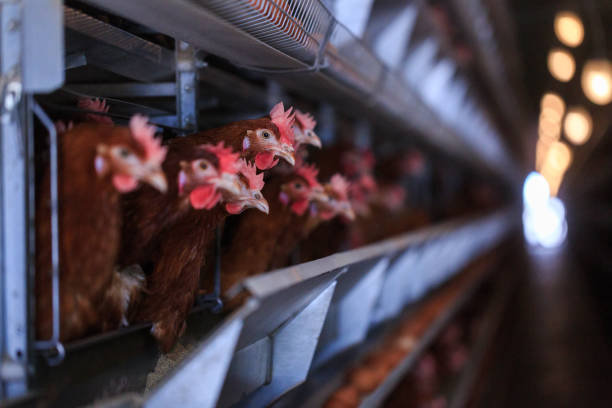
Electricity is vital for ventilation, lighting, and other automation processes. However, in many parts of Nigeria, electricity supply is inconsistent. This has led many poultry farm owners to invest in solar-powered systems or backup generators. A hybrid energy system using solar and diesel generators can ensure the continuous operation of critical systems like ventilation and feed/water delivery.
Waste Management and Sustainability
A large-scale egg operation produces a significant amount of manure. Proper waste management should be planned during the design phase. Composting manure or using it as organic fertilizer not only helps the environment but also offers additional income opportunities.
Some modern houses integrate manure drying systems or biogas plants to turn waste into useful resources. These systems also reduce odor and improve the farm’s biosecurity.
Egg Collection, Processing, and Storage Areas
A fully modern setup includes an efficient egg collection and grading system. Belt collection systems are commonly used to transfer eggs gently and hygienically from the laying nests to the egg-handling area. From there, eggs can be washed, candled, graded, and stored in cold rooms before packaging and distribution.
Proper storage areas with temperature-controlled rooms ensure that egg quality is preserved and shelf life is maximized. Eggs should be stored at 13–18°C with around 70% humidity for best results.
Benefits of Modern Chicken House Design for the Nigerian Market
Improved Production Efficiency
Modern housing systems directly contribute to increased egg production by reducing stress, disease occurrence, and mortality. Automated feeding and watering ensure that hens receive consistent nutrition, leading to higher egg yields and better eggshell quality.
Lower Labor Costs
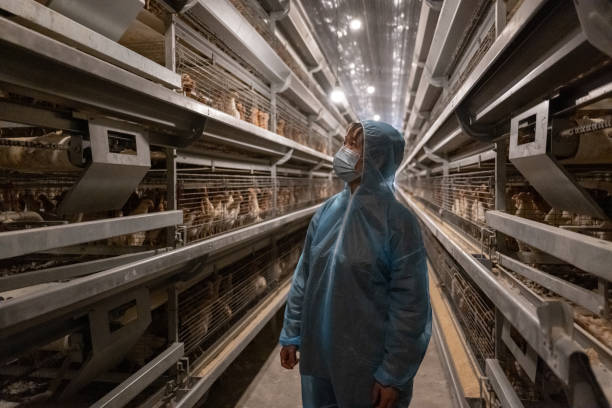
With automation handling feeding, watering, manure removal, and even lighting control, fewer workers are needed to manage larger flocks. This makes the business more sustainable and profitable, especially as labor costs rise.
Better Disease Control
Well-designed houses with proper ventilation and biosecurity reduce the spread of common poultry diseases such as Newcastle, Gumboro, and Marek’s disease. This means lower vet bills, fewer losses, and improved animal welfare.
Market Competitiveness
Consumers and retailers increasingly prefer farm-fresh, safe, and hygienically produced eggs. A modern setup makes it easier to meet these quality standards and gain certifications that enhance marketability and pricing power.
Financial Returns and Scalability
Although building a modern chicken house may require higher upfront capital, the long-term returns are far superior to traditional systems. With proper management, a well-designed poultry house can operate efficiently for 10–15 years with minimal repair or renovation costs.
Designing a future-proof system also allows for easy scaling. Modular houses, expandable cage systems, and integrated processing facilities mean the farm can grow alongside increasing demand without a complete overhaul.
Final Thoughts
For any large-scale egg producer in Nigeria, investing in modern poultry chicken house design is not just a trend—it’s a necessity. The right design ensures that the farm can meet the challenges of the local climate, high disease pressure, and growing market demand while maintaining profitability and sustainability.
From choosing the right cage system and automation tools to planning for long-term growth and efficiency, a well-thought-out chicken house sets the foundation for a thriving poultry business. Whether you’re starting construction or upgrading your existing farm, adopting modern housing technologies can be your best investment in the competitive Nigerian poultry market.
If you’re looking to build or upgrade your poultry house and want to ensure your design meets international standards, you’ll benefit from working with experienced suppliers like us who offer complete turn-key solutions, from cages and feed systems to ventilation and egg collection equipment.



